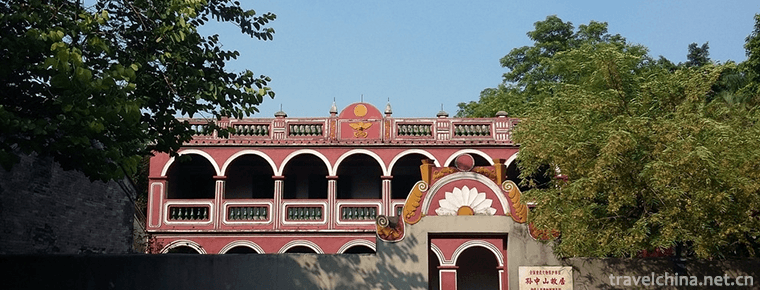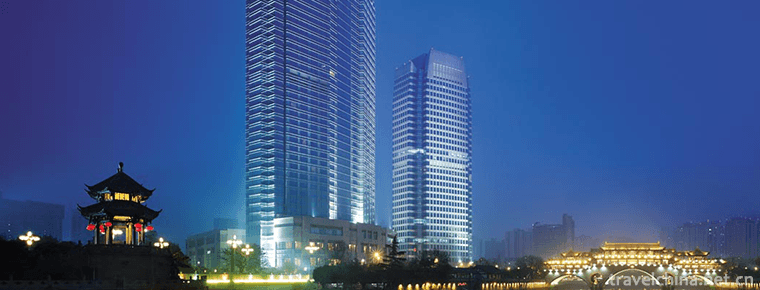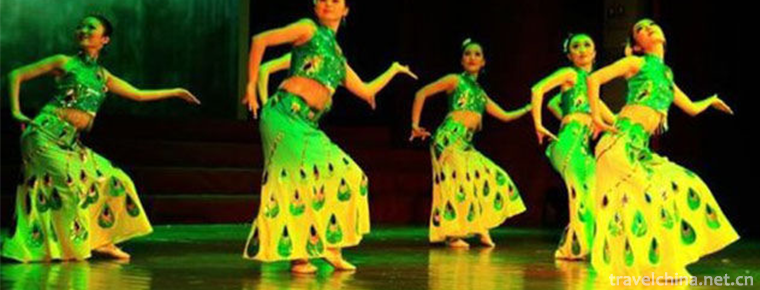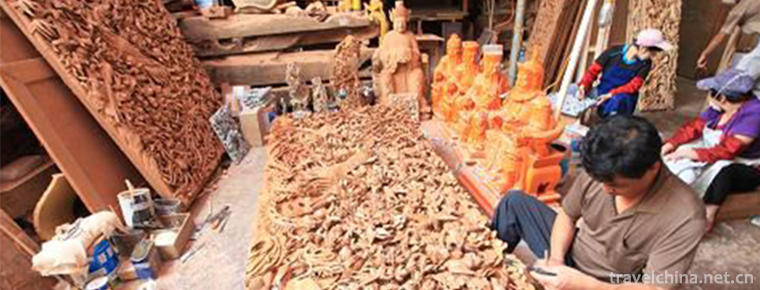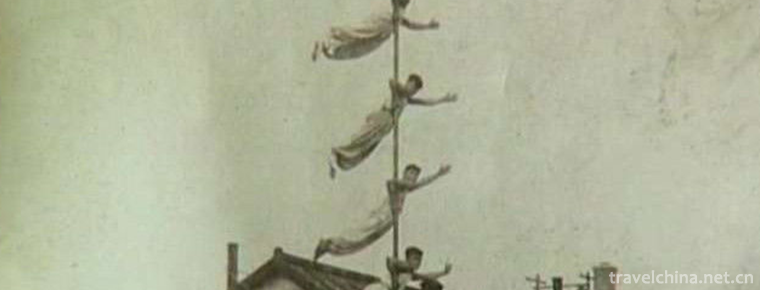Shulaibao
Shulaibao
Shulaibao, a traditional Chinese folk art. Popular in northern China, the source is a means for beggars to ask for money. One or two people sing. Beat with a bamboo board or with a copper bell attached to the condyle. Common sentence patterns are "three, three" six-character sentences and "four, three" seven-character sentences which can be disconnected. Two, four or six sentences can change rhyme. At first, the artists rapped along the street, all of them were improvised. After entering the small entertainment venues, the content of rap changed. Some artists sang Chinese folklore and historical stories and gradually evolved into fast-paced blackboard books, which were popular with Qulaibao.
On November 11, 2014, Shulaibao was approved by the State Council to be listed in the fourth batch of representative projects of national intangible cultural heritage.
Historical Origin
Shulaibao, also known as Shunyou, Rut, and Zuizi, is popular in all parts of North and South China. It was originally used by artists to walk the streets and sing in front of stores for money. In its long historical development, it has gone through the process of "singing in the street" and "singing in the ground". Because the artists praise the store's products richly and beautifully, "Number" is like "coming" (adding) a "treasure", so it gets its name. It is said that as early as the early Ming Dynasty, there were 13 links between teachers and inheritors of Shulaibao. The famous artists in the late Qing Dynasty and the early Republic of China included Haifeng, Cao Dekui, Liu Mazi and Huo Mazi. After the 1930s, there were Gaofengshan and Wang Fengshan. There are three families in Beijing: Suo, Li and Zhu; five in Jiangbei: Ding, Guo, Fan, Gao and Qi; five in Jiangnan: peach, plum, apricot, flower and spring. Shulaibao's entry into the small theatre began in the late Ming and early Qing Dynasties, when the more famous artists were Cao Dekui, Liu Ma-zi, Ho Ma-zi and so on.
Performing Style
The performance of Shulaibao is a rhyming number singing. Most of the traditional lyrics are improvised choreography, depending on a certain formula, relying on the actors'rich life experience and improvisational creative ability, talking about the past and the present, arranging analogy and narrating. The sentence pattern of the lyrics is the upper and lower sentences of the upper six and the lower seven, the upper six words can be three or three sentences, and the lower seven words are two, two or three sentences. The rhyming method of "big rut" is adopted. The ending characters of the upper and lower sentences are required to have the same rhyme (same tone), and a short speech can be inserted in the number singing.
With a wide range of life knowledge, Bao artists have accumulated a number of fixed phrases. Later, it absorbed the expression techniques of cross talk, formed a number of counterparts, and further improved the artistic expression. Some new Arias criticized the current disadvantages appeared. Humor and wit is one of the artistic characteristics of Laibao. The basic sentence pattern of Shulaibao is upper six and lower seven, upper six words are three, and lower seven words are four, three, two, five and two, three. The last word of the upper and lower sentences should rhyme in the same way and in the same tone. Two sentences in a group can be the same, or several or more sentences in a row can be the same. Some monologues can also be inserted in the singing sentences, such as crosstalk, whitewash, etc.
Accompanied instruments
In its evolution, Shulaibao has used many kinds of fencing instruments, such as sorghum pole, money board, salad machine, hip bone, three plates, three bowls, hoe board (also known as flat board), and so on. Seven boards are now commonly used, two of which are called big boards and five of which are called knot boards. There are many ways to play the big bamboo board, including the opening board before singing and the small door in singing. It can also make a variety of flowers to create atmosphere. Sometimes it can imitate some sounds to help express the content of the lyrics.
The accompaniment instruments of Shulaibao have evolved several times. They have used money boards, salad machines, cattle hatchboard bones, three boards and so on. Later, seven boards were widely used, namely two big bamboo boards (called big scoops) and five small bamboo boards (called knots). They were used for festival accompaniment, air mouthpiece, lyrics and atmosphere. It can also tap complex rhythm and changeable sound for pure technical performance before singing.
Inheritance Significance
Shulaibao was originally a means for beggars to ask for money. They used two burdock bones (known as the "closing fan") with thirteen small bells tied to them (commonly known as the thirteen Taibao). On their heads, they had two red tamarisks, tapping and reciting their own words to ask for money from businesses. They stand at the entrance to the left and right have rules, divided into "Shuo" and "Li" doors, there is also a kind of "Shuo Li unreliable". They don't want money until they reach their goal. If the business has a bad attitude or they export bad words, they will make up words and scold the streets. They must give money before they leave. It is a way of asking for money by a rogue. But they are smart enough to make up words whenever they see them. Although businessmen hate them, they are appreciated by most of the audiences. Businessmen do not need to hand-connect the money, but use the hip bone to do it. They also use the "knot board" (that is, seven bamboo boards). The way to ask for money is the same as the words and phrases they sing. Dai Shaofu's performance was accompanied by a "rhythm" board. Dai Shaofu absorbed this kind of folk art. After his processing and arrangement, he adapted it into a form suitable for cross talk, enriched the content, added a lot of "burdens" and eliminated many vulgar and unhealthy words, which made Shulaibao gain a new artistic life. During the performance, Yu Junbo and his deputy dressed up as a man and a woman. After entering life, they dressed up as Number Laibao to ask for food. Yu Junbo acted as the shopkeeper of the business.
In this way, the climax of art has been reached in the conflict and development of contradictions. Shulaibao is one of China's intangible cultural heritage, which needs to be protected and developed urgently.
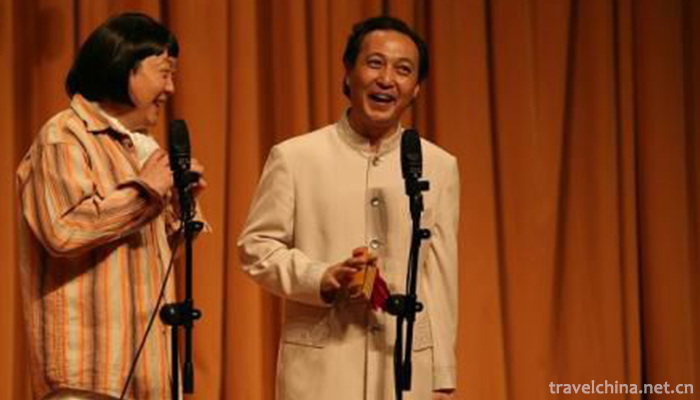
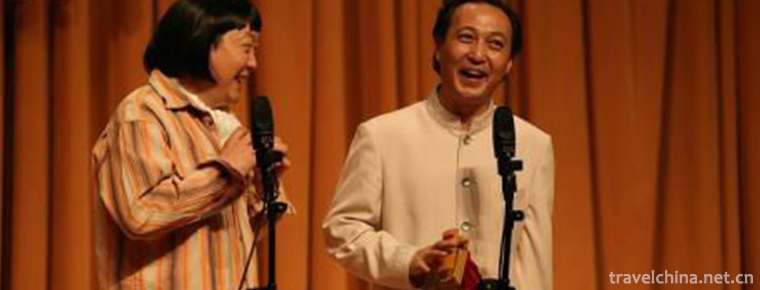
Shulaibao
-
Sun Zhongshans hometown
Sun Yat-sen's hometown is located in Cuiheng Village, Zhongshan City, Guangdong Province. It is surrounded by mountains on three sides: south, north and west, East by the Pearl River Estuary
Views: 179 Time 2018-12-12 -
Chengdu Shangri La Hotel
Chengdu Shangri-La Hotel belongs to Shangri-La Hotel Group. It was officially completed and put into use on May 20, 2007. The hotel is located at No. 9 Binjiang East Road, Chengdu City
Views: 171 Time 2018-12-16 -
Shibing Karst
Karst is karst. It is the general name of the geological function of water in dissolving rock (carbonate rock, gypsum, rock salt, etc.) mainly by chemical dissolution
Views: 242 Time 2019-02-08 -
suyukou national forest park
Suyukou National Forest Park is located in Helan Mountain National Nature Reserve, 50 kilometers northwest of Yinchuan City, capital of Ningxia. It is a national 4A-level tourist attraction.
Views: 182 Time 2019-02-13 -
Peacock Dance of Dai Nationality
Dai peacock dance is the most famous traditional performing dance in Dai folk dance in China. It is spread in Ruili, Luxi, Xishuangbanna, Mengding, Mengda, Jinggu, Cangyuan
Views: 236 Time 2019-04-24 -
Rice custom
Wannian rice custom and Shangrao Wannian County custom are cultural heritage. Wannian is the "land of rice". The traditional rice custom has been passed down in this area for thousands of ye
Views: 141 Time 2019-04-26 -
Wood carving
Wood sculpture is a kind of sculpture, which is often called "folk craft" in our country. Wood carving can be divided into three categories: solid round carving, root carving and relief carv
Views: 139 Time 2019-06-06 -
Ningjin Acrobatics
Ningjin acrobatics is one of the traditional folk acrobatics in Shandong Province. With its long history of development, extensive mass base, profound cultural heritage and exquisite performing skills
Views: 194 Time 2019-06-08 -
Sho Dun Festival
The Shirton Festival is a traditional religious festival of Tibetan people in Tibet, Qinghai, Gansu, Sichuan, Yunnan and other provinces and regions. It is mostly held in early February, mid-April or
Views: 184 Time 2019-07-09 -
Double Ninth Festival chong yang jie
The Double Ninth Festival refers to the ninth day of September in the lunar calendar every year. It is a traditional Chinese folk festival. In the Book of Changes, "Nine" is defined as the n
Views: 209 Time 2019-08-10 -
Capital Medical University
Capital Medical University (Capital Medical University), known as the first Medical University, is jointly established by the Beijing Municipal People's government, the national health and Health Comm
Views: 160 Time 2019-11-26 -
Deyang science and technology
In 2018, Deyang City won 141 provincial projects, including 108 provincial science and technology plan projects and 33 Provincial Intellectual property projects. There are 32 provincial patent implementation projects. 184 high-tech enterprises. A total of
Views: 163 Time 2020-12-14
